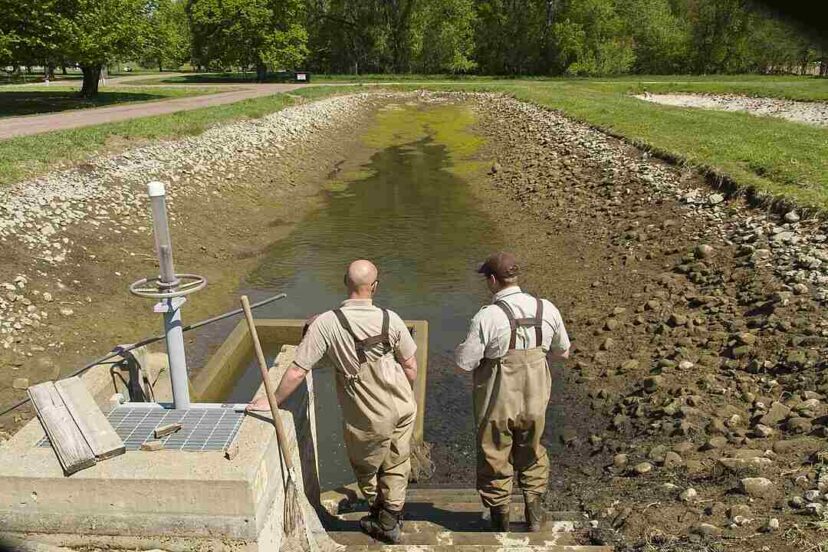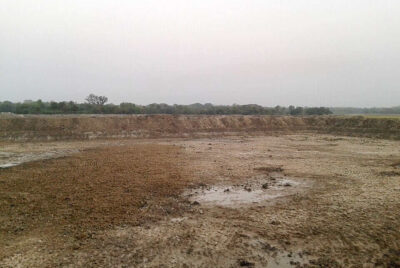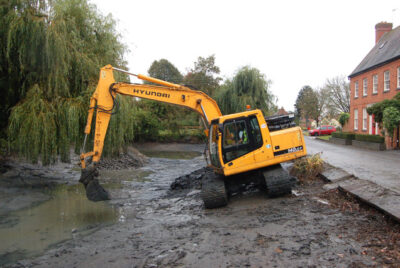How to Drain a Pond
If you’re a pond owner, there comes a time when it’s necessary to drain your pond, whether it’s for maintenance, repair, or a complete redesign. However, this task can seem daunting, especially if you’re unsure of the process. In this guide, we’ll provide a detailed explanation of how to drain a pond effectively, ensuring minimal disruption to the ecosystem while maintaining the health of your pond’s inhabitants.
Understanding the Need for Draining a Pond
Before diving into the process, it’s crucial to understand why draining a pond might be necessary. A pond is a complex ecosystem featuring various life forms – from fish and insects to plants and beneficial bacteria. Draining the pond can potentially disrupt this ecosystem, so it should only be done when necessary.
Why Drain a Pond?
- Pond Liner Damage – A damaged liner can lead to leaks, causing water loss and potential pollution from external sources. Repairing or replacing the liner often necessitates draining the pond.
- Algae Overgrowth – Excessive algae can overwhelm the pond’s filtration system, leading to green, murky water that’s difficult to clean without complete drainage.
- Sludge Build-Up – Over time, decaying organic material can lead to a mucky layer at the bottom of the pond, obscuring visibility and potentially harming the pond’s inhabitants. If regular cleaning methods aren’t sufficient, draining the pond can be the most effective solution.
- Pond Redesign or Repair – If you’re planning to renovate, upgrade, or modify your pond’s design, fully draining the pond may be necessary.
Remember, if the goal is merely to clean the pond, complete drainage might not be needed. Regular maintenance, including proper filtration, skimming, and debris removal, should help keep your pond clean. However, should the need arise, here are the various ways to drain a pond effectively.
Draining a Pond: The Different Methods
Using a Pond Pump – (How to Drain a Pond)
Using a high-flow pond pump is perhaps the easiest and quickest method for draining a pond, especially larger ones. This involves placing the pump in the deepest part of your pond and ensuring the outflow hose leads to where you want the water to drain. The type of pump you choose will depend on the size of your pond and the speed at which you want it drained.
Submersible Pumps
Submersible pumps are a popular choice due to their efficiency. They are placed at the lowest point of the pond, leveraging gravity to intake water. However, the deeper your pond, the more powerful your pump needs to be to push the water out.
Solar-Powered Pumps
Solar-powered pumps can save you money on electricity and are best suited for smaller ponds. They work best during bright daylight hours, and their portability enables you to position them anywhere near your pond.
Hand Pumps
Hand pumps work best with smaller ponds and are reliable due to their mechanical simplicity. They can be used in any weather, day or night, and don’t require an electrical outlet.
Using a Siphon Hose
If you have a small pond and aren’t in a hurry, a siphon hose can be a viable option. This method leverages the principle of water flow, with one end of the hose placed in the pond and the other at a lower elevation where you want the water to drain. By applying suction at the lower end, the force of gravity does the rest, allowing the water to drain from the pond.
Using a Pond Vacuum Cleaner – (How to Drain a Pond)
You can also use a pond vacuum cleaner to drain a pond, especially small ones. Although people primarily use pond vacuums for cleaning, some come with an effective discharge system you can use to drain water. This method is not only efficient but also allows you to clean your pond simultaneously.
Using a Solar Power Pond Pump – (How to Drain a Pond)
A solar power pond pump is an economical way to drain a small pond, particularly during the summer months when sunlight is abundant. While solar pumps are slow and best suited for small ponds, they can serve as an aerator, providing oxygen to your pond and circulating water for overall cleanliness.
Draining a Pond Without a Pump
Believe it or not, you can drain your pond without a pump. You use a hose to create a siphon in this method, which lets gravity drain the water to a lower location. This method works best for smaller ponds and requires patience because the drainage process can be slow.
Refilling Your Pond
Once your pond is drained and the necessary maintenance or repairs are done, it’s time to refill it. Be sure to treat the water with a suitable water softener to neutralize heavy metals and other toxins. You may also want to add beneficial bacteria to aid in the breakdown of organic matter and keep your water clean.
Conclusion
Draining a pond can seem like a daunting task, but with the right tools and techniques, it doesn’t have to be. Whether you’re using a pond pump, a vacuum cleaner, or a simple hose, it’s crucial to do so in a way that minimizes disruption to the pond’s ecosystem and ensures the health of its inhabitants. And remember, always refill your pond with treated, clean water to maintain a healthy environment for your pond’s inhabitants.
Frequently Asked Questions
Q: Why might I need to drain my pond?
A: You might need to drain your pond if you need to repair or replace the pond liner, control an overgrowth of algae, remove excessive sludge, or redesign your pond.
Q: Can I drain my pond without a pump?
A: Yes, you can drain your pond without a pump using a siphon hose. This method, however, best suits smaller ponds and can proceed slowly.
Q: How often should I drain my pond?
A: You generally shouldn’t need to fully drain a well-maintained pond often. However, if you notice problems like excessive algae, sludge build-up, or damaged liners, you may need to drain and clean your pond.
Q: How do I refill my pond after draining it?
A: When refilling your pond, ensure you treat the water with a suitable water softener to neutralize heavy metals and other toxins. You might also want to add beneficial bacteria to aid in the breakdown of organic matter and keep your water clean.
Q: Will draining my pond harm the fish?
Draining your pond can disrupt the ecosystem, which can be stressful for fish. Ensure you have a suitable temporary habitat for your fish if you need to drain your pond. Once you refill and treat the pond, carefully reintroduce the fish.




